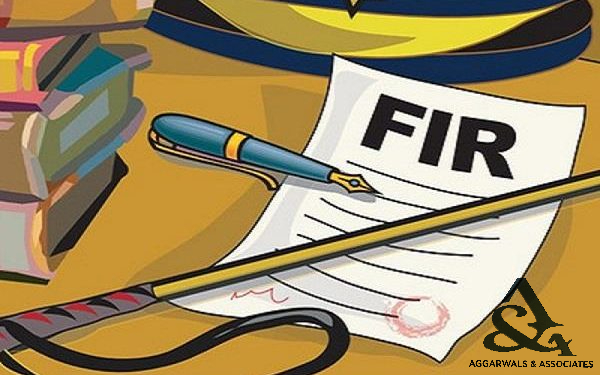
Quashing of an FIR is a remedy that stops unfair criminal cases. Courts use special powers to protect rights and prevent misuse of legal machinery. In this article, you will learn how to quash an FIR, the grounds for quashing of FIR, and step-by-step procedures.
- Legal Insight: Courts can quash FIRs early to protect rights and avoid frivolous trials.
Definition of FIR (Why It Matters)
An FIR (First Information Report) is the first document filed when a crime is reported under Section 154 CrPC.
- It records the complainant’s narrative of the alleged offence.
- It preserves crucial first-hand details that shape evidence collection and prosecution strategy.
- Its accuracy influences charge framing and the trial outcome.
- Legal Insight: FIR is critical because it sets the stage for criminal investigation and impacts evidence gathering.
Jurisdiction to Quash an FIR
Courts can quash an FIR before charges are framed. Two main authorities:
Supreme Court Power (Articles 136 & 142)
- Article 136: Allows special leave petitions to correct legal errors.
- Article 142: Ensures “complete justice” when lower courts cannot.
- Legal Insight: The Supreme Court uses its inherent jurisdiction to quash an FIR for justice.
High Court Power (Section 482 CrPC)
- Section 482 CrPC: High Courts can act before a charge sheet is filed.
- Used to prevent abuse of process or safeguard fundamental rights.
- Legal Insight: High Courts quash an FIR early under Section 482 CrPC to protect rights.
Grounds For Quashing of FIR
Courts examine precise criteria before quashing an FIR. Each ground is labelled for clarity.
1. Lack of Prima Facie Case
- Alleged facts do not form an offence under the IPC.
- Prevents unnecessary litigation when no legal basis exists.
- Legal Insight: Quash an FIR if the alleged facts do not form an offence.
2. Settlement between Parties
- Applies to compoundable offence cases.
- A valid compromise outside the court shows an intention to settle peacefully.
- Legal Insight: Courts may quash an FIR when parties have validly settled under the IPC.
3. Abuse of the Process of Law
- FIRs filed with malicious intent, personal vendettas, or ulterior motives.
- Protects individuals from harassment and ensures procedural fairness.
- Legal Insight: Quash an FIR to prevent malicious prosecution.
4. Protection of Fundamental Rights
- Violations of Articles 14 (Equality), 19 (Speech), or 21 (Personal Liberty).
- Quashing of an FIR can uphold constitutional remedies.
- Legal Insight: FIRs undermining equal treatment or personal liberty can be quashed.
5. Factual Innocence
- Conclusive evidence (alibis, forensic reports) shows no involvement.
- There is no basis for criminal charges.
- Legal Insight: Quash an FIR when clear proof shows innocence.
6. Frivolous or Unsubstantiated Grounds
- FIRs are based on rumours, trivial disputes, or manipulated facts.
- Lacks prima facie evidence and is mala fide.
- Legal Insight: Courts strike down FIRs lacking any genuine criminal foundation.
7. Violation of Procedural Safeguards
- Filing without the required magistrate approval or ignoring mandatory CrPC sections.
- Undermines due process and fairness.
- Legal Insight: Procedural lapses in filing a warrant quashing.
8. Double Jeopardy
- Article 20(2): Protects against being tried twice for the same facts.
- If the accused has already faced trial or punishment, a subsequent FIR can be quashed.
- Legal Insight: Prevents multiple prosecutions for identical offences.
9. Commercial Disputes
- Disputes in contracts or financial claims without criminal intent.
- Better resolved in civil courts rather than criminal prosecution.
- Legal Insight: FIRs filed over commercial disputes with no criminal intent can be quashed.
10. Juvenile or Aged Accused
- Courts show compassion to minors or elderly defendants.
- May quash the FIR when alternative remedies, such as rehabilitation, suffice.
- Legal Insight: Protect vulnerable groups by quashing FIRs and opting for alternative remedies.
11. Public Interest
- Maintaining social harmony and public welfare.
- Quash an FIR when continued prosecution poses a greater risk to peace.
- Legal Insight: Balance individual prosecution with wider community welfare.
How to Quash an FIR: Step-by-Step Guide
This section provides a concise overview of the quashing procedure. Each step outlines the key actions required under Section 482 of the CrPC. This helps you build a strong petition and present compelling evidence to the court.
Step 1: Draft a Detailed Petition
Prepare a concise petition that states the facts clearly, cites Section 482 CrPC, and outlines specific grounds to quash an FIR.
• Use precise facts and cite Section 482 CrPC.
• Include the “Quashing of FIR” term to reinforce the primary keyword.
• Provide a timeline of events with case citations
Step 2: Attach Supporting Documents
Gather all relevant evidence, affidavits, medical and forensic reports, and any settlement deeds. These documents support your claim of innocence and procedural lapses.
• Affidavits, medical reports, forensic results, and settlement deeds.
• Highlight prima facie evidence of factual innocence.
Step 3: Serve Notice on Prosecution
Deliver a copy of your quashing petition to the public prosecutor to comply with court requirements. This ensures a fair hearing.
• Give a copy to the public prosecutor as per court rules.
• Ensures fair hearing and timely response.
• Give a copy to the public prosecutor as per court rules.
• Ensures fair hearing and timely response.
Step 4: Submit Written Arguments
Provide a concise written note of submissions. Focus on key legal precedents, constitutional mandates, and statutory requirements to support your quashing petition.
• Emphasise key legal precedents (e.g., R.P. Kapur v. State of Punjab).
• Cite constitutional remedies for rights violations.
Step 5: Attend the Court Hearing
Appear before the judge and present focused oral arguments to highlight defects in the case. Use phrases like “grounds for quashing of FIR.”
• Present focused oral arguments on quashing grounds.
• Use terms like “grounds for quashing of FIR.”
• Answer judges’ queries succinctly.
• Present focused oral arguments on quashing grounds.
• Use terms like “grounds for quashing of FIR.”
• Answer judges’ queries succinctly.
Step 6: Consider Supreme Court Appeal
Explore filing an appeal in the Supreme Court under Article 136 if the High Court denies relief. Highlight any miscarriage of justice or denial of inherent jurisdiction to strengthen your case.
• If the High Court denies relief, file an appeal under Article 136.
• Seek special leave for miscarriage of justice or denial of inherent jurisdiction.
• If the High Court denies relief, file an appeal under Article 136.
• Seek special leave for miscarriage of justice or denial of inherent jurisdiction
- Legal Insight: Follow petition drafting, evidentiary support, notice, written submissions, hearing, and appeal.
Landmark Judgments Shaping Quashing Jurisprudence
A brief overview of key Supreme Court and High Court decisions that have guided the principles of quashing FIRs in India. It highlights major legal precedents and their implications.
| Case & Citation | Key Holding |
|---|---|
| R.P. Kapur v. State of Punjab (AIR 1960 SC 866) | Section 482 CrPC should be used sparingly when no legal evidence exists. |
| Mohammed Wajid v. State of U.P. (2023 INSC 2023) | Prior convictions alone do not dictate quashing decisions if other criteria are met. |
| Salib @ Shalu @ Salim v. State of U.P. (2023 INSC 687) | FIRs with malicious intent warrant rigorous scrutiny. |
| Satish Mehra v. State (2013) | Differentiated genuine matrimonial disputes from vindictive allegations. |
| Suresh Pothugunta v. State of Haryana (2023 P&H) | Section 174A CrPC FIRs filed without authority can be quashed. |
- Legal Insight: Key cases stress cautious use of inherent jurisdiction and focus on mala fide intent.
Key Considerations & Impact of Quashing an FIR
This section outlines how quashing an FIR affects investigations, individual rights, and public trust. It helps you understand the broader consequences.
| Implication | Description |
|---|---|
| Immediate Relief | Stops investigations and trials at an early stage. |
| Rights Protection | Guards personal liberty and prevents arbitrary state action. |
| No Civil Implications | Allows civil remedies such as damages to proceed without hindrance. |
| Public Confidence | Reinforces faith in justice by curbing malicious prosecutions. |
Note: Courts show restraint in quashing FIRs for heinous crimes (murder, rape) due to high public interest.
- Legal Insight: Quashing FIR grants relief, protects rights, preserves civil options, and boosts public confidence.
Financial and Business expert having 30+ Years of vast experience in running successful businesses and managing finance.





